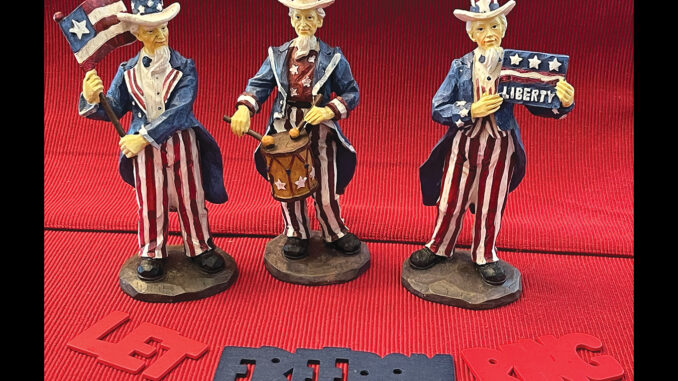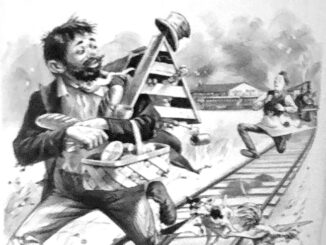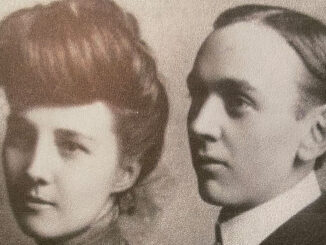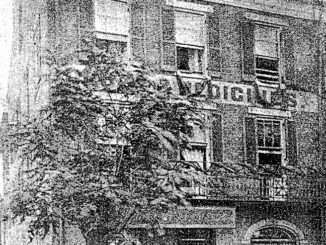
A puzzle is an interesting past-time activity. Often, in the midst of confusion or indecisive thinking, you
can turn to a jigsaw puzzle and let your mind make order of the pieces and their relationship to each other. Suddenly, you discover the ideas bothering you begin to have a sense of order and connection not evident before. We often see life’s events individually without seeing their relationship to other factors. This sounds like heavy mumbo jumbo but really it’s quite simple. For example, we learn about Paul Revere’s famous ride in the
eastern colonies, but what was happening at that time in the land across the Appalachian Mountains in the area which is now called Kentucky? How do Daniel Boone’s events relate to the Boston Tea Party? Let’s run through some sample historical events and see how they relate.
1600s
Europeans arrive on the east coast of North American land to establish a settlement. In 1607 the Virginia Company, led by Captain John Smith, established the first permanent settlement at Jamestown.
In the land to become known as Kentucky, the Cherokee from the north and the Delaware and Shawnee from the south were using the land as their hunting grounds. Before, the land was inhabited for thousands of years by a variety of groups like the Hopewell, the Adena, the Mississippians and the Ancient people.
1763-1764
The war with the French and Indians ended. The British made an agreement with the Indians declaring they would not settle the land west of the Appalachian Mountains.
Colonists did not agree with the British promise and began moving into the area, most by way of the Cumberland Gap, discovered by Dr. Thomas Walker in 1750.
1775
The American War of Independence breaks out following the British passing of The Intolerable Act requiring taxation of the Americans without representation. The Battle of Bunker Hill was on June 17, 1775.
West of the Appalachian Mountains, Daniel Boone, leading other settlers, established the town of Boonesborough and then worked to increase the Wilderness Road through the Cumberland Gap.
The above examples show an interesting relationship between the two areas of our country, intriguing as it is. Today, the East and the West experiences are more synchronized as we enter the month in which we share our common Declaration of Independence. Let’s take a moment to acknowledge the dedication and efforts of the makers of that famous document.
January 1776, Thomas Paine paved the way for the events to follow with his publishing of his pamphlet, Commom Sense. Inspired, the Continental Congress began the process for the first writing of a document declaring independence, letting Thomas Jefferson write the first draft. When presented by the committee, the draft provoked days of heated debate, mainly on the issue of slavery. On July 4, 1776, the Continental Congress adopts the Declaration of Independence, formally establishing the country’s independence from Britain. The signers of the document were not full-time politicians; there were several lawyers but most were merchants, physicians, plantation owners, and several ministers. The ages of most were in their forties to fifties, with the oldest being Benjamin Franklin, who was seventy.
The above facts are well known to lovers of America’s history. What is not well-known is what happened to the signers of the document. Many Americans were pleased with the Declaration but there were many British fighters and loyalists who rebelled against the document. Unrest followed for some time, with most of the resistance taken out on some of the fifty-six signers.
Five of the group were later captured by the British loyalists. They were treated as traitors and soon died after being tortured by the British. The homes of twelve others were destroyed by fire after being ransacked, leaving the owners in poverty. The sons of some signers were targeted in battle or captured. One of the signers from Virginia, Carter Braxton, a wealthy planter and shipping trader, soon died in poverty after the British targeted and destroyed his ships at sea. Poverty was the result of hounding by the British to individuals like Thomas McKeam, a lawyer representing Pennsylvania, whose possessions were seized by the British. Looting and destroying of property by vandals and soldiers were common, causing several of the famous fifty-six signers to die bankrupted or destroyed.
The members of the Continental Congress were educated gentlemen, not rabble-rousers. They had wealth, experience and commitment to the cause of freedom from tyranny and taxation without representation. They were believers in freedom and democracy, so they willingly came forward to sign their names, proclaiming these words, “For the support of this declaration, with the firm reliance on the protection of the Divine Providence, we mutually pledge to each other our lives, our fortunes, and our sacred honor.” Fifty-six leaders signed the historical document. Many lost their lives. Several lost their fortunes. None of the fifty-six lost their sacred honor. For this, we pause 247 years later to commemorate their honor and express our thanks.
-by Mary Alice Oliver
About the Author: Mary Alice Oliver is a Bowling Green native who is a 1950 graduate of Bowling Green High School. She retired from Warren County Schools after 40 years in education. Visiting familiar sites, researching historical records and sharing memories with friends are her passions.








